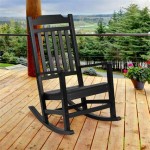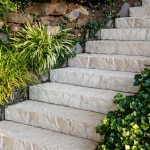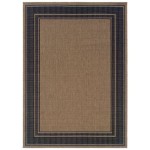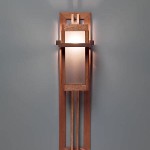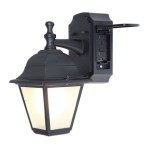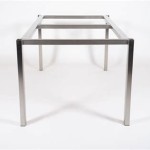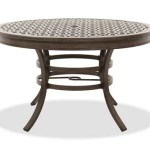Outdoor Canopy Tent with Mosquito Net: A Comprehensive Guide
Outdoor canopy tents with mosquito nets represent a versatile and practical solution for individuals seeking protection from both sun and insects while enjoying the outdoors. These structures are commonly utilized in a variety of settings, ranging from camping and picnics to backyard gatherings and outdoor markets. Their design typically incorporates a sturdy frame that supports a fabric canopy, providing shade, and fine mesh netting that effectively prevents mosquitoes and other insects from entering the enclosed space. This combination of features makes them a popular choice for creating comfortable and protected outdoor environments.
The increasing popularity of outdoor canopy tents with mosquito nets is driven by several factors. Firstly, the growing awareness of insect-borne diseases, such as Zika virus, West Nile virus, and Lyme disease, has prompted individuals to seek more effective methods of insect control. Secondly, the desire to enjoy outdoor activities without the annoyance and potential health risks associated with insect bites has led to a greater demand for these products. Finally, advancements in materials and manufacturing techniques have made these tents more affordable, durable, and easy to set up, further contributing to their widespread adoption.
Understanding the different types of outdoor canopy tents with mosquito nets, their features, and their appropriate applications is crucial for making an informed purchasing decision. This article provides a comprehensive overview of these structures, covering various aspects such as types, materials, setup, maintenance, and factors to consider when selecting the right tent for specific needs.
Types of Outdoor Canopy Tents with Mosquito Nets
Outdoor canopy tents with mosquito nets can be broadly categorized based on their frame design and overall structure. The most common types include:
Pop-Up Canopy Tents with Mosquito Nets: These tents, also known as instant canopies, are characterized by their ease of setup and portability. The frame is typically pre-assembled, and the tent can be erected in a matter of minutes. Pop-up canopies are often lightweight and compact when folded, making them ideal for camping trips, picnics, and other events where portability is a primary concern. The mosquito net is usually attached to the canopy frame with Velcro or zippers, providing a seamless barrier against insects.
Dome Canopy Tents with Mosquito Nets: Dome tents offer a more traditional camping tent design with a dome-shaped structure supported by flexible poles. These tents are generally more robust and weather-resistant than pop-up canopies, making them suitable for longer camping trips and more challenging weather conditions. The mosquito netting is integrated into the tent's design, providing complete protection from insects. Dome canopy tents often feature a floor, which adds an extra layer of protection from ground-dwelling insects and moisture.
Screen House Canopy Tents: Screen houses are designed primarily for insect protection and ventilation. They typically feature a fully enclosed mesh structure with a roof to provide shade. Screen houses are often larger than pop-up or dome canopy tents, making them suitable for creating a comfortable outdoor living space. They are frequently used in backyards, patios, and decks to provide a bug-free environment for relaxing and entertaining.
Gazebo Canopy Tents with Mosquito Nets: Gazebos are permanent or semi-permanent structures that offer a more sophisticated and aesthetically pleasing outdoor shelter. When equipped with mosquito netting, they provide a luxurious and comfortable outdoor living space. Gazebo canopies are often used in backyards and gardens to create a dedicated outdoor dining or relaxation area. The mosquito netting is typically attached to the gazebo frame with zippers or hooks, allowing for easy removal and cleaning.
Each type offers different advantages in terms of portability, durability, ease of setup, and overall size. The selection process should carefully consider the intended use and environmental conditions.
Key Features and Materials
The performance and longevity of an outdoor canopy tent with a mosquito net depend largely on the quality of the materials used in its construction and the features incorporated into its design. Key features and materials to consider include:
Canopy Fabric: The canopy fabric should be durable, water-resistant, and UV-protective. Common materials include polyester, nylon, and polyethylene. Polyester is a popular choice due to its affordability, strength, and resistance to fading. Nylon is a lighter and stronger option, but it is also more expensive. Polyethylene is a cost-effective material that provides excellent water resistance but may not be as durable as polyester or nylon. The canopy's denier (D) rating indicates the fabric's thickness and strength. A higher denier rating signifies a more robust and durable fabric.
Mosquito Netting: The mosquito netting should be fine enough to prevent even the smallest insects from entering the tent. The mesh size is measured in holes per inch (HPI). A higher HPI indicates a finer mesh and better insect protection. Opt for netting with at least 200 HPI to ensure adequate protection from mosquitoes, gnats, and other biting insects. The netting material should be durable and tear-resistant. Common materials include polyester and nylon.
Frame Material: The frame material should be strong, lightweight, and rust-resistant. Common materials include steel, aluminum, and fiberglass. Steel is the most affordable option but can be heavy and prone to rust. Aluminum is a lightweight and rust-resistant option that is ideal for portable tents. Fiberglass is a flexible and durable option that is often used in dome tents.
Zippers and Closures: The zippers and closures should be durable and easy to use. Look for zippers with sturdy metal or plastic teeth that will not easily break or jam. Closures should be secure and provide a tight seal to prevent insects from entering the tent.
Ventilation: Adequate ventilation is essential for preventing condensation and maintaining a comfortable environment inside the tent. Look for tents with mesh panels or vents that allow for airflow while keeping insects out.
Water Resistance: The tent's water resistance is measured in millimeters (mm). A higher mm rating indicates better water resistance. Look for tents with a waterproof rating of at least 1000mm to ensure adequate protection from rain.
UV Protection: Prolonged exposure to sunlight can damage the canopy fabric and fade its color. Look for tents with a UV protection rating of at least UPF 30 to protect yourself and the tent from the harmful effects of the sun.
By considering these features and materials, consumers can select a canopy tent that meets their specific requirements and provides reliable performance in various outdoor conditions.
Setup, Maintenance, and Safety Considerations
Proper setup, maintenance, and adherence to safety guidelines are crucial for extending the lifespan of an outdoor canopy tent with a mosquito net and ensuring the safety of its users. The following points outline important considerations:
Setup: Always follow the manufacturer's instructions carefully when setting up the tent. Ensure that the frame is securely anchored to the ground using stakes or weights to prevent it from being blown over by wind. Avoid setting up the tent under trees with dead branches or in areas prone to flooding. Double-check that the mosquito netting is properly attached and sealed to prevent insects from entering.
Maintenance: Regularly inspect the tent for tears, holes, or other damage. Repair any damage promptly to prevent it from worsening. Clean the canopy fabric and mosquito netting with mild soap and water to remove dirt and debris. Allow the tent to dry completely before storing it to prevent mold and mildew growth.
Storage: Store the tent in a dry, cool place when not in use. Avoid storing the tent in direct sunlight or in areas with extreme temperatures, as this can damage the fabric and frame. Ensure that the tent is completely dry before storing it to prevent mold and mildew growth.
Safety: Never use open flames or heating devices inside the tent, as this can create a fire hazard. Keep the tent away from flammable materials. Be aware of the weather conditions and take appropriate precautions in strong winds or heavy rain. Avoid overloading the tent with heavy objects, as this can damage the frame.
Insect Control: While the mosquito net provides a physical barrier against insects, it is important to take additional measures to control insects in the surrounding area. Use insect repellent on exposed skin and clothing. Eliminate standing water, which can serve as breeding grounds for mosquitoes. Consider using mosquito traps or other insect control devices to reduce the insect population.
Anchoring: Proper anchoring is critical, especially in windy conditions. Use heavy-duty stakes or weights to secure the tent frame to the ground. Ensure that the stakes are driven deep into the ground and that the weights are properly positioned. Consider using guy lines to provide additional stability.
By following these setup, maintenance, and safety guidelines, users can maximize the lifespan of their outdoor canopy tent with a mosquito net and enjoy a safe and comfortable outdoor experience.
Selecting the right outdoor canopy tent with a mosquito net involves careful consideration of intended use, environmental conditions, and budget. Understanding the different types, features, and materials is crucial for making an informed decision. Proper setup, maintenance, and adherence to safety guidelines are essential for ensuring the longevity of the tent and the safety of its users.

Unbranded 13 Ft X 10 Gray Outdoor Patio Gazebo Canopy Tent With Ventilated Double Roof And Mosquito Net For Lawn Garden L1m W41942174

Gvdv 10ft X Pop Up Canopy Outdoor Tent With Adjustable Height Mosquito Netting Zipper Doors And Carry Bag

Toolcat 10 Ft X Grey Top Outdoor Patio Gazebo Canopy Tent With Ventilated Double Roof And Mosquito Net

Coos Bay 11x11x9 7 Ft Pop Up Instant Gazebo Tent With Mosquito Netting Outdoor Canopy Shelter Red

Hoteel 11 X Pop Up Gazebo With 4 Mosquito Netting Outdoor Canopy Tent Double Roof Tops And 121 Square Ft Of Shade For Patio Garden Camping

Toolcat 13 Ft X 10 Brown Top Outdoor Patio Gazebo Canopy Tent With Ventilated Double Roof And Mosquito Net

Dropship 10x10 Outdoor Patio Gazebo Canopy Tent With Ventilated Double Roof And Mosquito Net Detachable Mesh Screen On All Sides Suitable For Lawn Garden Backyard Deck Brown Top To Sell Online At A Lower

12x12 Pop Up Gazebo With Mosquito Netting Heavy Duty Instant Outdoor Canopy Tent Ebay

Gazebo Canopy Mosquito Nets Wall Panels 10x10 Ebay

Hoteel 12x12ft Pop Up Gazebo Ez Set Camping Canopy Tent With 6 Sides Mosquito Netting Waterproof Uv Resistant Portable Screen House Room


